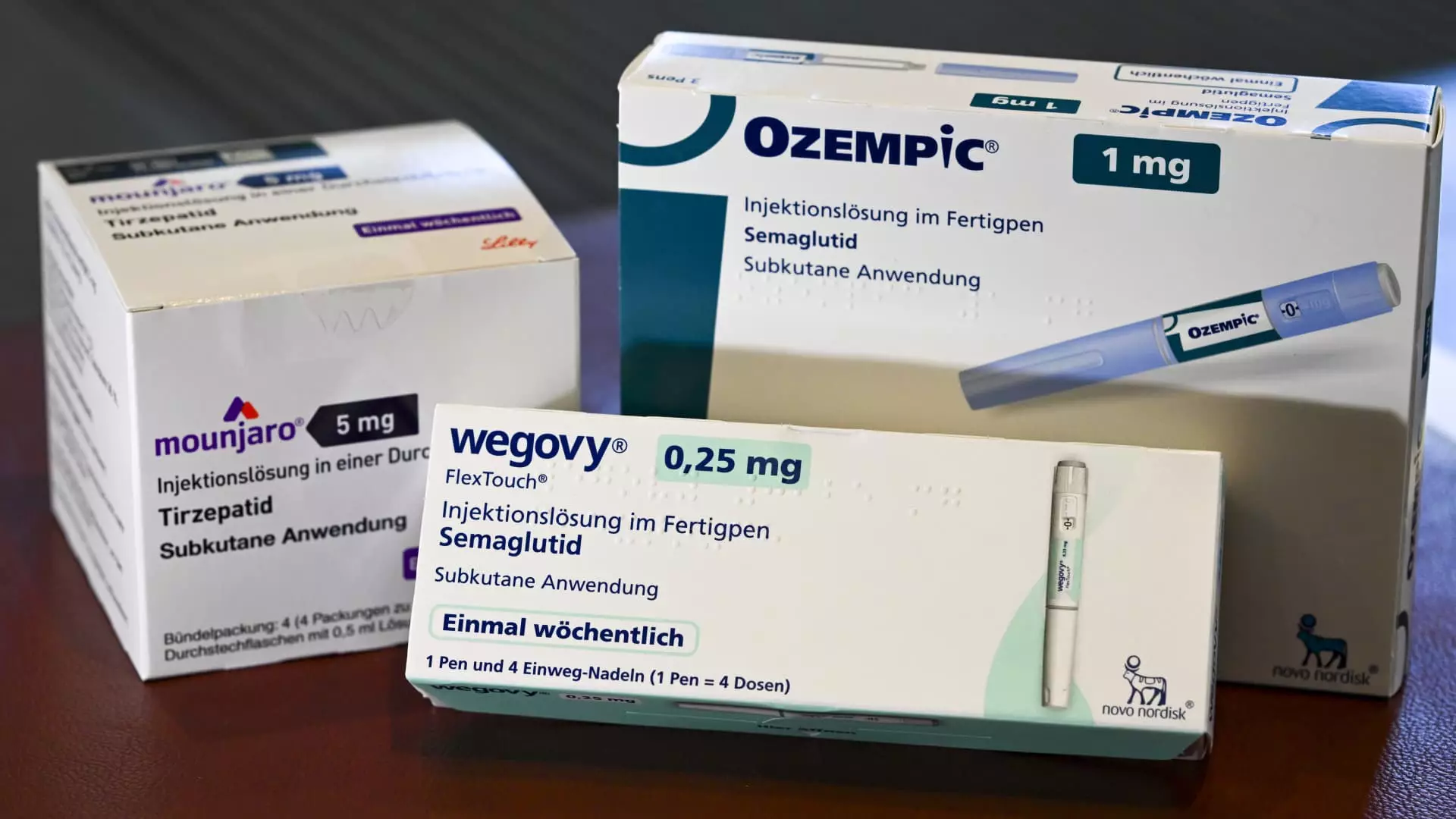The emergence of GLP-1 medications such as Mounjaro, Ozempic, and Wegovy signifies a striking shift in diabetes care and weight management. These drugs, while seemingly revolutionary, carry alarmingly high price tags that are fueling a dramatic increase in health costs, particularly for large employers. The fundamental question we should be asking is not merely regarding their efficacy over time but rather whether the economic burden they impose can be justified by the health benefits they promise.
As we navigate through the sea of recent studies, Aon’s findings reveal a startling reality: while these drugs may show improved health outcomes, their cost implications are not just a bump in the road; they represent a chasm. The analysis reported a 44% reduction in significant cardiovascular events among GLP-1 users, which sounds promising. However, it’s crucial to understand that this impressive figure is overshadowed by the expensive initial investments required to access these drugs in the first place.
Higher Costs Today, Possible Savings Tomorrow?
These findings prompt us to question the sustainability of such treatment solutions. Sure, we might see a dip in heart attacks and strokes, but the trajectory of the initial financial impact raises serious red flags. GLP-1s boast a staggering list price of more than $1,000 per dose—costs that can drain employer healthcare budgets faster than they anticipate. It is critical to differentiate between short-term financial pain and long-term health gains when evaluating these treatment options.
Employers are witnessing a surge in drug expenditures due to the popularity of these medications. Evernorth, a Cigna division, claims that GLP-1s are causing costs to spiral even quicker than the climb seen with other high-priced specialty drugs, including cancer treatments. The first year on these drugs can see a rise in healthcare costs for patients, primarily due to a multitude of doctor visits—visits related to the new medication and existing ailments tied to obesity such as sleep apnea and acid reflux.
A Promising Yet Costly Path to Wellness
It’s astonishing to see that while GLP-1 users experience increased medical expenditures initially, a silver lining surfaces after the two-year mark, where an average of 7% savings in overall healthcare costs begins to unfold for regular users. For those who strictly adhere to their regimen, the savings reach as high as 13%. But consider this: are we really prepared to impose such financial strain upfront on our healthcare system, with the faint glimmer of future cost savings on the horizon?
The biopharmaceutical industry is not simply an economic entity; it has ramifications for public health and employee well-being. Aon’s findings aim to demonstrate to employers that investing in GLP-1 coverage can yield returns on investment (ROI), but this narrative may obscure the wider picture. While it’s reassuring that these treatments can lower risks of severe conditions and decrease future medical expenses, do we err too far into the territory of justifying exorbitant drug costs in the name of health?
Investing in Solutions: A New Paradigm for Health Management
In response to these challenges, Aon has taken a proactive approach by introducing a subsidized GLP-1 weight management program for its workforce. This not only highlights the dedication to employee health but also underscores a complex reality—the investment in health requires long-term commitment and adaptation. Such initiatives could pave the way for a new paradigm in employer-sponsored healthcare, where preventive measures and sustained wellness strategies become essential components of health plans.
Ultimately, the need for a balanced perspective is clear. The miraculous potential of GLP-1 medications should not blind us to the financial implications and ethical responsibilities they entail. As employers and policy-makers navigate these turbulent waters, they should actively consider the trade-offs involved in pushing high-cost treatments as the optimal solution. Prioritizing comprehensive health management strategies—ones that offer affordable access to medications while focusing on preventive care—could serve as an effective antidote to the looming healthcare cost crisis.

